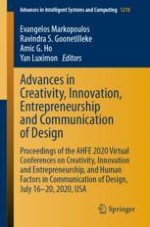This book brings together experts from different areas to show how creativity drives design and innovation to allow the integration of a wider spectrum of topics related to engineering design, industrial design and ergonomics in design. It presents theories and best practices demonstrating how creativity generates technological invention, and how this, combined with entrepreneurship, leads to business innovation. It also discusses strategies to teach creativity and entrepreneurial competencies. Moreover, the book discusses the role of human factors in understanding, communicating with and engaging users, reporting on innovative approaches, new typographies, visual elements and technologies applied to mobile and computer interfaces developments. It also discusses innovative strategies for design education and sustainable design. Based on the AHFE 2020 Virtual Conference on Creativity, Innovation and Entrepreneurship and on the AHFE 2020 Virtual Conference on Human Factors in Communication of Design, held on July 16–20, 2020, this book offers a fresh perspective and novel insights for human factors researchers, designers, communicators and innovators.
